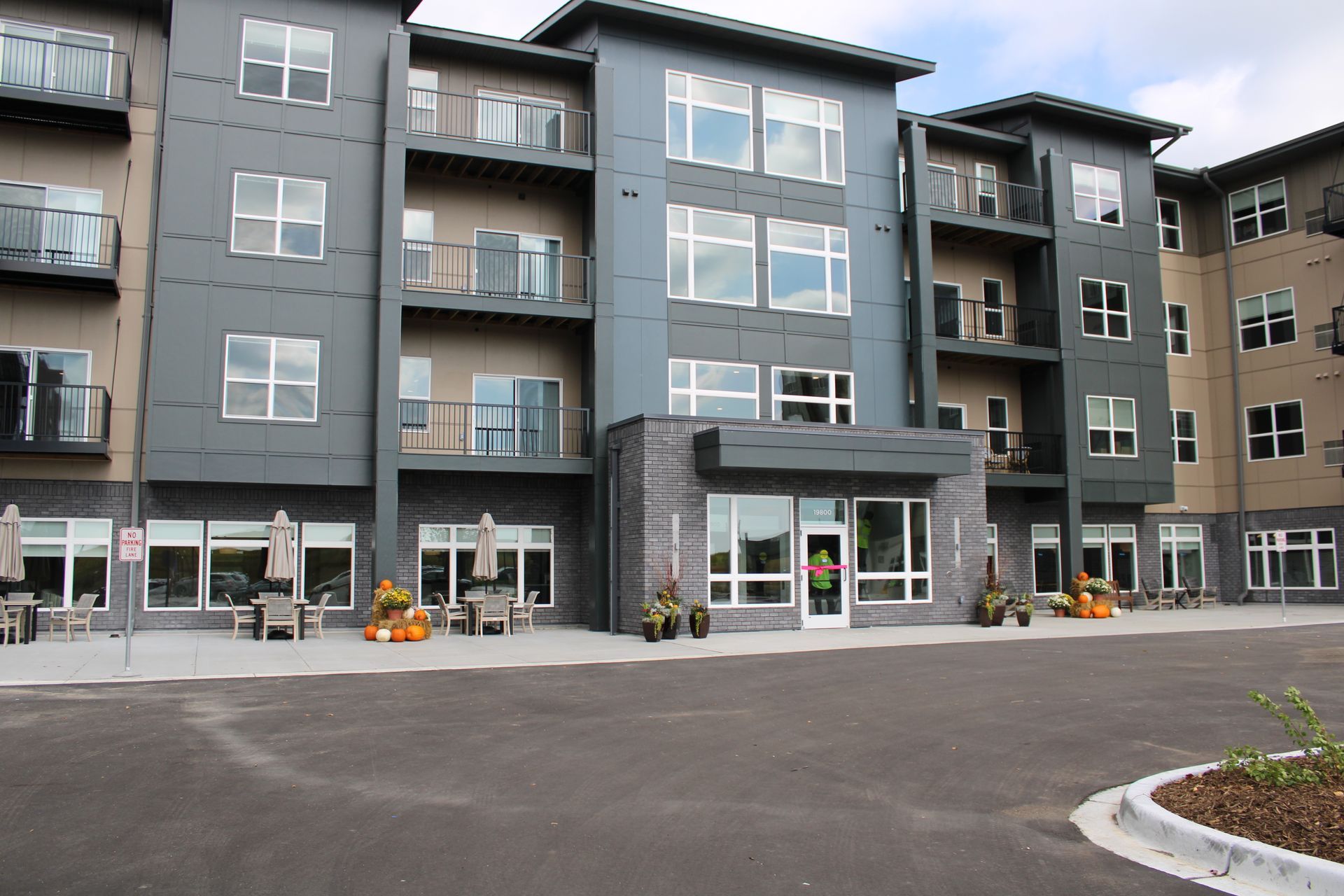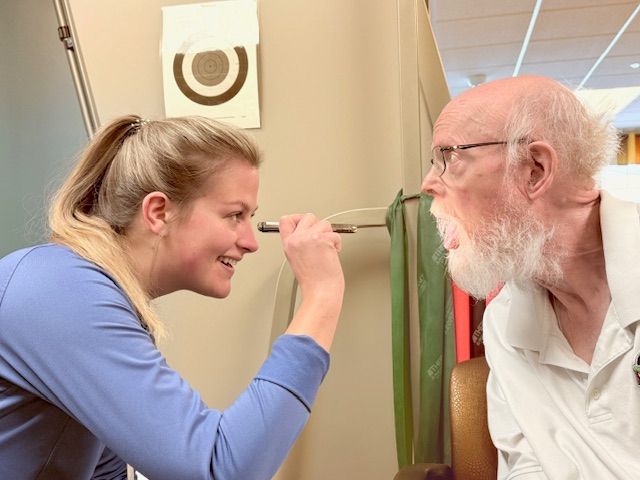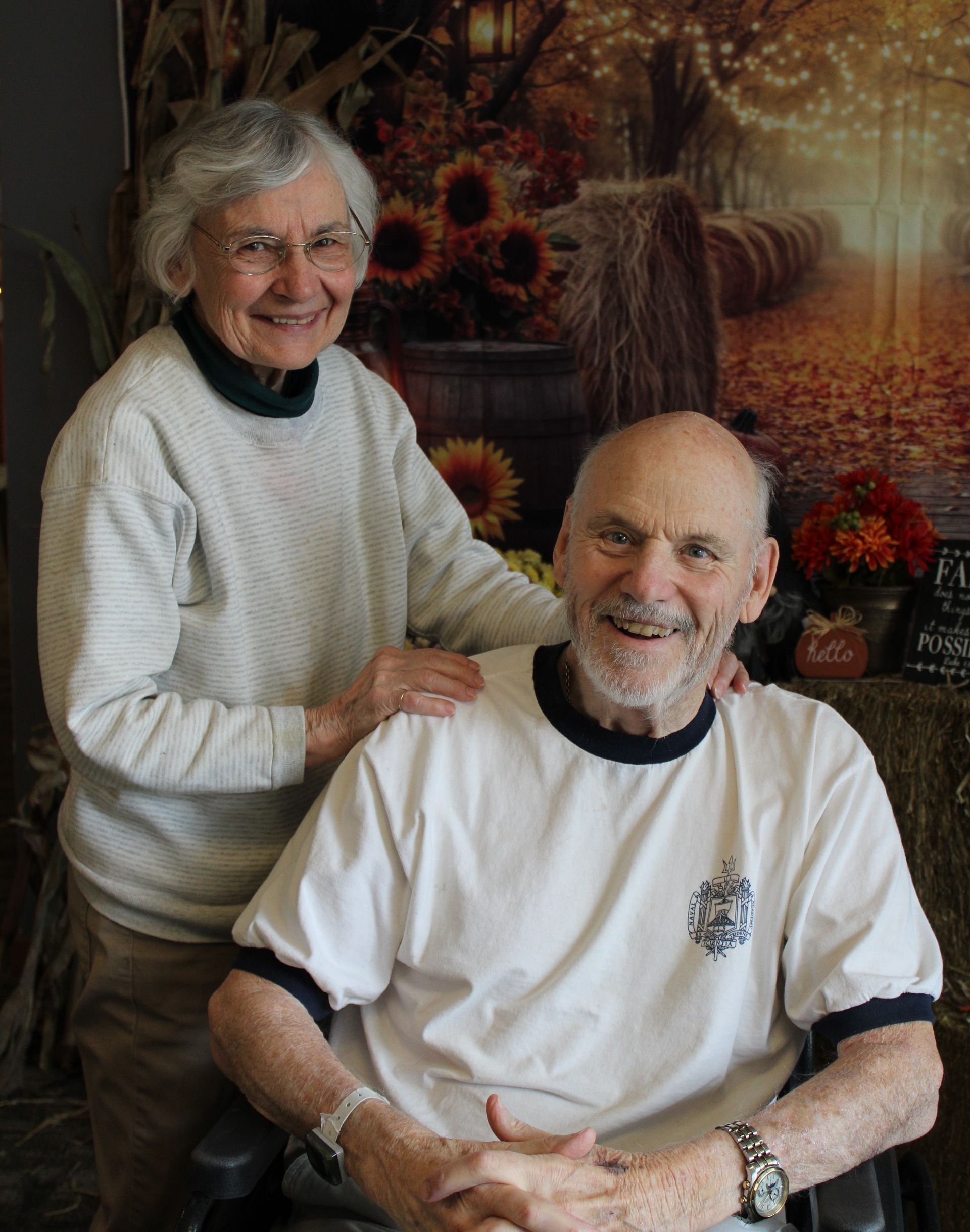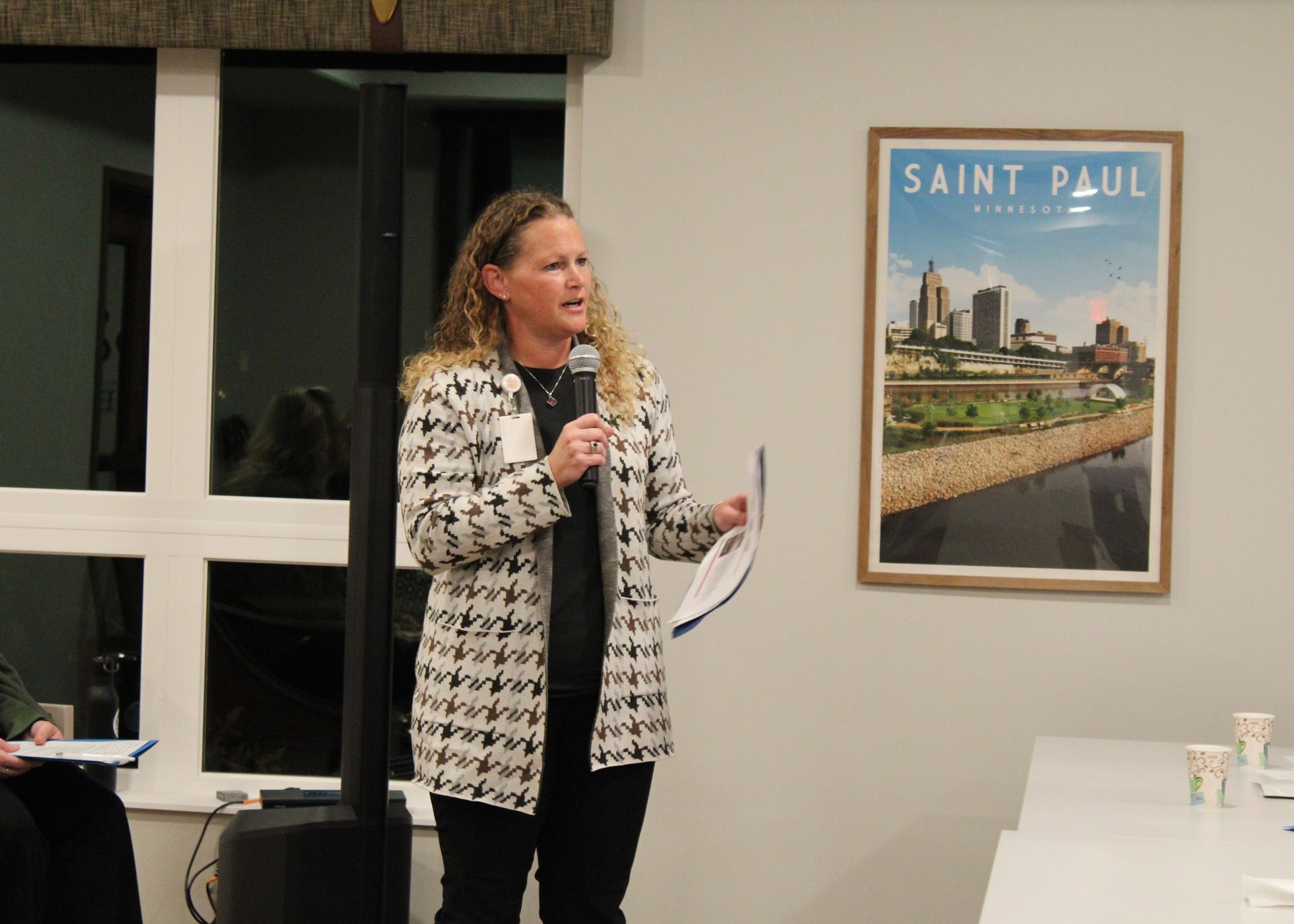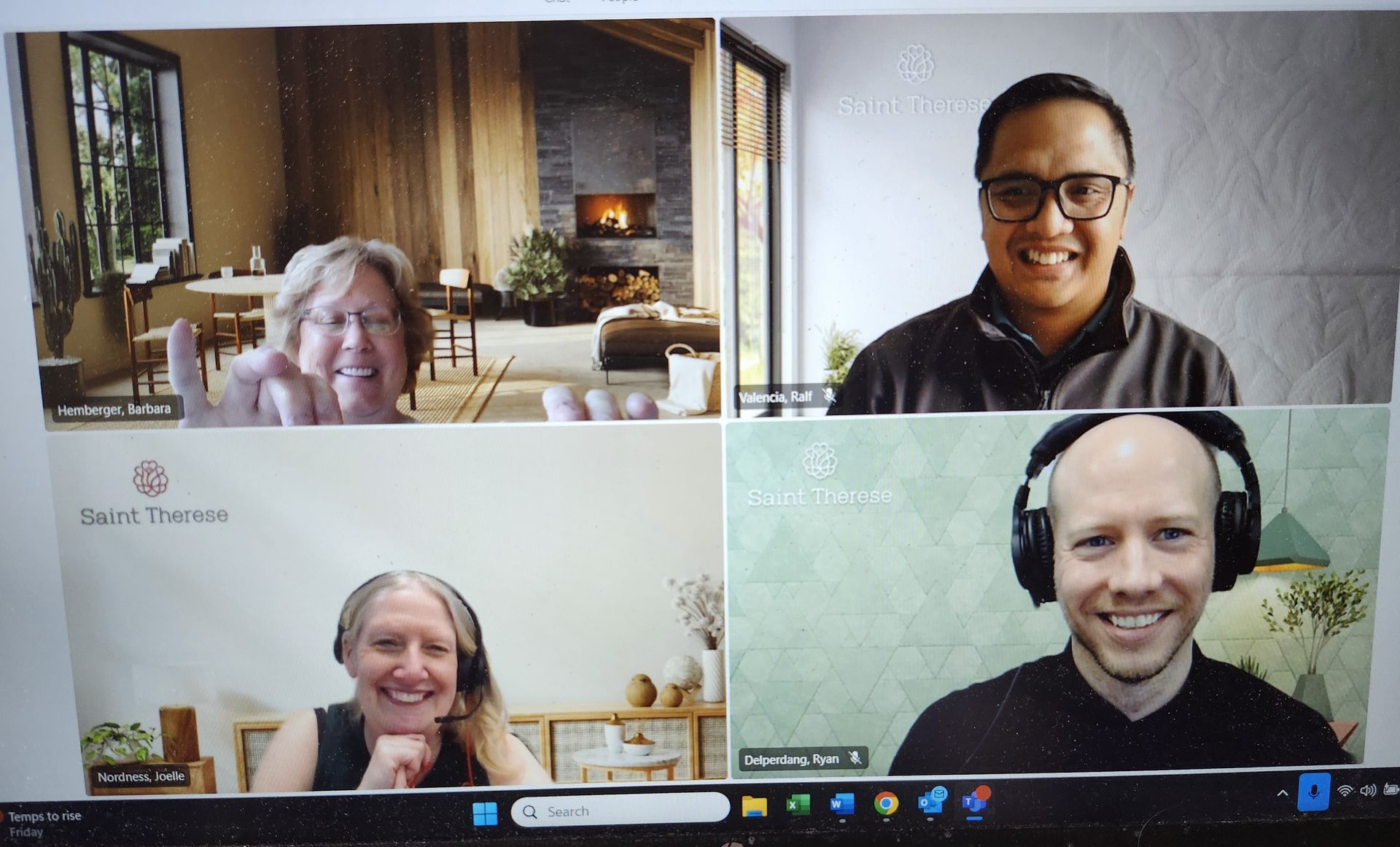
The Power Trio Behind Saint Therese’s People-First Hiring Approach
Shaping the culture, one hire at a time
Earlier this week marked National Health Care Recruiter Recognition Day—and while some recognition days may feel a bit random, this one is anything but.
That’s because health care recruiters, though often working behind the scenes, have a front-and-center impact. They are the first point of contact for prospective employees considering a career with Saint Therese, and they set the tone for each new hire’s journey.
At Saint Therese, our recruiting team—Joelle Nordness, Ryan Delperdang and Ralf Valencia—does this with purpose, professionalism, and a deep commitment to our mission. They’re not just filling roles; they’re assembling teams aligned with our core values, starting with the very first touchpoint in our employee experience process, The Saint Therese Way (more on that in a future blog).
This dedicated trio handles recruitment for about 12–14 positions at a time, each managing different communities and entities—but rotating locations occasionally to keep perspectives sharp. Their shared goal? To not have more than 20-30 open positions across all Saint Therese communities and Ascend Rehab.
And they’re delivering. In the last ten months, they have hired 405 people. When you consider that each hire takes approximately five hours of recruiter time—developing job descriptions, screening, scheduling, and initiating onboarding—the hours invested are substantial. Not to mention the turnaround: it can take anywhere from 16 hours to two weeks to fill a role.
One standout example of their impact came during a particularly challenging quarter. “They had just seven weeks to fill five leadership roles and ensure there was not more than one LPN/RN opening at one of our communities, and not more than four open positions for home health aide and certified nursing assistant roles at another location,” said Chief People and Culture Officer Jenny Marchiniak. “These were aggressive goals, but they achieved 100 percent! And they did it with energy, flexibility, and a real commitment to The Saint Therese Way—making the candidate experience both efficient and engaging.” All while workforce shortages continue to challenge healthcare systems nationwide.
Getting to Know the Team
Joelle Nordness, Director of Central Recruiting (photo lower left), has been with Saint Therese for seven years and in her HR position since 2021. She manages the team while also recruiting for high-level roles such as nurse managers and supervisors, as well as Saint Therese Management Services positions.
She says she loves helping candidates find their place within the organization. “Part of it is understanding each candidate’s career path and then watching them grow and reach their goals here.”
Equally important, she says, is ensuring the right fit for the people at the heart of Saint Therese—our residents. “They deserve the very best care. We want candidates who are here for the right reasons—people who are resident-focused, team-oriented, and aligned with our mission.”
Joelle adds that recruiting has evolved to become more strategic and relationship-driven. “It’s about building partnerships with schools and colleges, and even identifying volunteers, because we believe Saint Therese is something special.”
Ryan Delperdang, Talent Acquisition Specialist (photo lower right), has been with Saint Therese for six years, and in recruiting for the past two. He says he finds joy in hearing candidates’ stories and then watching them make a difference.
“We’re the face of the organization, and we take that seriously. We’re not just filling roles—we’re looking for people who embody our core values,” said Ryan. “We’ll meet candidates on their terms—nights, weekends, whatever it takes.” He says his favorite part is seeing long-term impact. “I love looking at the employee anniversary lists each month and seeing names I helped bring in, still thriving here.”
Ralf Valencia, Talent Acquisition Specialist (photo upper right), the newest member of the team, joined five months ago. A clinical psychologist by training, Ralf brings a thoughtful lens to the recruiting process.
“I really value seeing someone grow from candidate to outstanding employee,” he said. “For me, it’s not just about qualifications—it’s about how they speak, how they listen, whether they’re empathetic. That’s what our residents deserve.”
Behind Every Great Hire
Though they often work in different locations and virtually, Joelle, Ryan and Ralf operate as a tightly connected unit. They’re in constant contact, collaborating with each other and with the HR representatives at each campus who continue the onboarding journey.
“We meet weekly with the HR teams and really value their partnership,” Joelle said. “The employee journey doesn’t stop at hiring—it continues with every interaction, every shift, every opportunity to live out our mission. We couldn’t do this without them.”
Closing the Loop
Recruitment may be the starting line of the employee experience, but for this team, it's also a mission-driven calling. They’re not just bringing people in the door—they’re shaping the culture, one hire at a time.
At Saint Therese, great care starts with great people. And great people start with this team.
About
At Saint Therese, our heartfelt purpose since 1968 has been a people first approach to living well by providing senior care and services where every life we touch feels welcomed, respected, and heard. We achieve this by doing ordinary things with extraordinary love every single day. Contact us to learn more.
